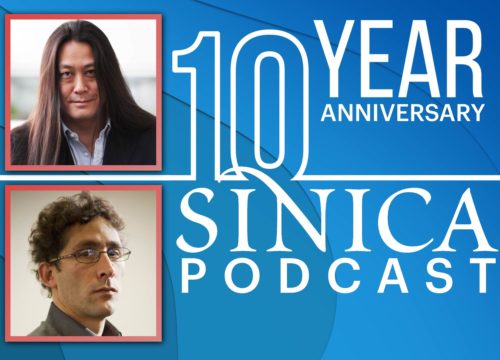Yale professor Tso-Ping Ma: China lacks the right mindset and skills for semiconductor development
Full transcript:
Jia: So you started teaching at Yale University in the 1970s. And now you’re a professor at a lot of top universities in China, such as Tsinghua University and Peking University. How do you feel about the research and scientific academic environment in both countries?
Ma: When I first started to go to China, in 1994, I felt there was a huge gap between the research in my field in the U.S.A. and the research in China. Even at the most leading universities I visited, including Peking University, Tsinghua University, Fudan University, and Jiaotong University, there were hardly any leading research projects, from the international standard. I couldn’t find any — although, there were signs that they were trying to accelerate the research project and also in terms of recruiting and equipment purchasing, all that. So that was then.
Last year, I led a delegation to review Peking University’s School of Electrical Engineering and Computer Science, and I found that there were 130 or so faculty members. 130. In my university, Yale University, the same field, we had about 40. So only less than one-third of what Peking University had. I had 10 people, a delegation, from Princeton, Caltech, UCLA, and a couple of European countries, all leading universities. None has a faculty size as big as Peking University. So that’s one thing.
Then, I found that most, if not all, the faculty members were doing sizable or significant research unlike in 1990, or some 20 years ago. Now everybody, at least in that school, was doing significant research. And then, I found out that the funding, the research funding level they received on average, is more than what our faculty received at Yale University, or Princeton, or… Actually, in terms of funding… Then, I looked at the facilities. They showed us some of the modern [facilities]. I said, “Wow. It’s on a par with the leading universities in the U.S.A.” So, I’d say, from the obvious things one can see or look [at], they’re not inferior to the leading universities here.
Jia: What are some areas in technology and innovation that China still needs to catch up? How can we do that?
Ma: If you look at the semiconductor, integrated circuit, and chip business as a whole, you can segment into, say, market applications and design. Circuit design. Wafer chip manufacturing and packaging, testing. Typically, people telegrize them in these segments. There’s also materials, equipment for manufacturing. These are — usually, you can buy these materials and equipment easily from Europe or Japan. There’s usually no restriction to these. I am not too worried about these.
But China is very strong in getting into the market, and very quickly. Whoever produces a chip, they can see applications. In Shenzhen, a lot of cell phones came out, sometimes sooner than iPhones. So that’s the strength of Chinese innovation in the market applications area. And, however, in circular design, also, China is doing very, very well. Of course, a couple of them purchased existing nice design companies, and they enlarge. So I think they’re almost on a par worldwide. What’s lacking is the manufacturing, the production of chips. And that’s the one that you can just purchase from TSMC or…you need the people. If you purchase from TSMC, they sell you certain… If you just have the fab without people, [it] won’t work. TSMC built a very advanced fab in Nanjing, in Dongbei New District. But they made a deal. They said we will supply all the key engineers and we won’t have to recruit from China because they know they can’t recruit such people quickly. So China agreed. That means even if you have this advanced fab, you’re not going to get technology transferred to China. They’re making really advanced, much more advanced than SMIC, not ZTE. The one in Nanjing is much more advanced than China’s most advanced foundry. But they’re not going to benefit from the present. Just like Samsung has this memory fab in Xi’an, very advanced, SK Hynix has in Wuxi, very advanced. But sometimes China will count them as Chinese producers. But China will not get [the] benefit of technology transfer. One has to realize that this is the area that takes long-term investment. It requires talent.
Jia: China will not benefit from the technology transfer because China is mainly doing manufacturing?
Ma: No, the manufacturing involves a lot of — especially advanced manufacturing, like TSMC fab in Nanjing, they have many, many advanced engineers, experienced engineers from Taiwan. All they hire internationally because they couldn’t find talents with experience in China. So China has to produce, say, students or…gradually get trained, and it takes time to build up the experience. So that’s the one area that would take a longer time. Despite money — money cannot solve that problem.
Jia: So that’s a talent problem.
Ma: It’s a talent problem, the right talent. One advantage of China — China produces the largest number of engineers. Even IC engineers, they produce every year. But it’s top heavy. Most of these engineers are application-oriented because that’s where they can make money quickly. They go to Alibaba. Not really help the manufacturing of chips.
Jia: Those types of engineers.
Ma: Those types of engineers, right. It takes a longer time. And they don’t get as quick an advance as the application engineers.
Jia: Obviously, for a lot of Westerners, they think China doesn’t have innovation — they can only copy technology from the West. Do you still agree with that sentiment?
Ma: I think that’s the consequence. If you’re the funder, the people provide the funds, [and you] would like to see tangible results next year or two years from now. There’s no time, really, to do fundamental research, which will flourish in 10 years after you plant the seeds. Somehow, I think whoever provides the funds should understand. You should put aside a small amount, 5 percent, and not to expect such 5 percent money will get results next year or even in 10 years. I think even 5 percent of such a fund is greater than whatever the U.S. is supporting for R&D in this field.
Jia: So what percentage of the whole funding was used for R&D in China?
Ma: I don’t see much because I see the reports from them. The huge chunk of money goes to enlarging the fabrication facilities, buying equipment, buying U.S. companies, buying European companies. So to purchase a company may take one year. Immediately, your result or your sale market value increases 100 percent. That’s the quickest way to show results. And I see very little, still, going into supporting R&D. I talked to people who manage such a fund. They said, “We understand completely what you’re talking about.” But the people who supply me money wish to see results next year. Two years from now, three years from now, I may change my job. So if I don’t produce within two years, it doesn’t affect me at all.
Jia: So do you think that’s the deep-rooted reason for China’s technology sector to be still in this current situation of lagging behind the West?
Ma: I think, certainly, the money helps. [With a] huge amount of money, you see progress. But one would only expect much more efficiency from such investment. One of the reasons why I don’t expect high efficiency of investment, return of the investment, is this mentality.





